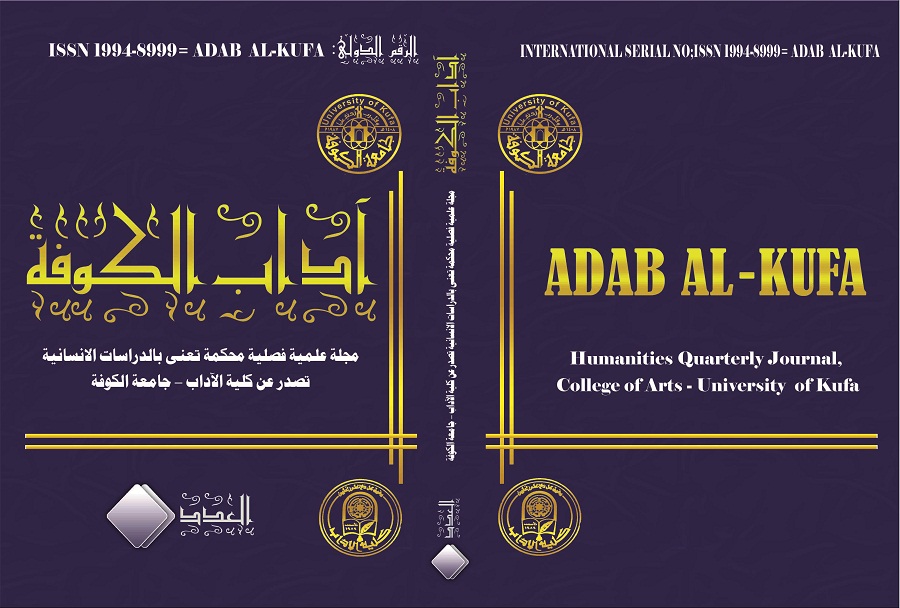The political activity of Ziauddin Tabatabaei in Iran 1944-1946 AD
DOI:
https://doi.org/10.36317/kaj/2013/v1.i15.6467Keywords:
Activity, political, constitutional movemen, the Shah, opposition, partiesAbstract
The history of Iran is of great importance to researchers and historians due to its sensitive location on the Arabian Gulf and its riches that were the focus of attention of major countries.
Among the personalities who played a distinguished role on the Iranian political arena was Diaa al-Din Tabatabaei, who lived in three different stages of modern and contemporary Iranian history, the period of the Qajar state and its fall in 1925 AD, and the Pahlavi state, which was characterized by two different eras, the reign of Reza Shah 1926-1941 AD, and was succeeded by his son, Muhammad Reza. Pahlavi 1941-1979 AD, which completes an era with special features, whether with regard to Iran's internal situation or its external relations.
Diaa al-Din was born in the city of Shiraz in 1888 AD from an Alawite religious family. His father worked as a preacher and preacher in the court of the Iranian Crown Prince Mozaffar al-Din Shah (1853-1907 AD). It is distinguished by its scathing articles against Iranian officials because of the bad conditions in which Iran lived, and it became clear from the beginning that Tabatabai leaned towards the British side because he believed that Iran would not advance economically and scientifically except through this cooperation. The first military coup in the history of the Middle East took place in February 1921 AD, but the political rivalry between Reza Khan and Diaa al-Din Tabatabaei eventually led to Reza Khan taking control of Iran and Diaa al-Din leaving Iran in June 1921 AD. Diaa al-Din remained in exile, roaming between Europe and Palestine Until 1943 AD, when he returned to Iran after the Allied forces forced Reza Shah to step down from power in 1941 AD because of his siding with the German side in World War II (1939-1945 AD), and the return of Zia al-Din witnessed a revival of right-wing forces in the face of the Tudeh Communist Party, and this is what we will control The light in our research, and Dia Al-Din's political life ended after his arrest in 1946 AD, to begin the stage of political retirement for Dia Al-Din, which lasted until his death in 1969 AD 0
Downloads
References
دفينس رايت، عبد الحسين ميرزا فرما نفرما ،انـﮔليسها وجنـﮔ بهائي اول ،ترجمة، نادر مير سعيدي، "تاريخ معاصر ايران" (مجلة)، تهران، شماره نهم، سال سوم، 1378ش
علي ابو الحسني (منذر)، كارنامة شيخ فضل الله نوري، (تهران: نشرت عبرت، 1380ش)،
علي ابو الحسني (منذر)، انديشه، سبزازندكَي سرخ زمان وزندكَي شيخ فضل الله نوري، (تهران: نشرت عبرت، 1380ش).
عباس هاشم زادة محمدية، اسناد نويافته از زندكَانى سيد ضياء طباطبائي يزدى، "كَنجينة اسناد" (مجلة)، تهران، 1371ش، شماره 3و4، سال سوم
م.أ.م.م.ت.م.أ، "ارشيو رياست وزرا"، صورت استفتاء از علماى تهران در خصوص قرار دار 1919، صفر 1338ش، (دون نمره).
محمد جمالزاد، ريدارها ويادكَارها، "آينده" (مجله)، تهران، 13ش، شماره 7، سال دوم
آسيه آل احمد، كلنل كاظم خان سياح، "تاريخ معاصر ايران" (مجلة)، تهران، زمستان 1379ش، شمارة 15 و 16، سال جهارم،
لقمان دهقان، نيزى نقش انكَلستان درترويج كَرايشان كَرلز از مركز درقبل ازكودتا 1299ش وعلل كودتا 1299ش، "تاريخ معاصر ايران" (مجله)، تهران، 1379ش، شماره 15 و 16، سال جهارم
محمد كامل عبد الرحمن، سياسه ايران الخارجية في عهد رضا خان بهلوي 1921-1941م، (جامعة البصرة: مركز الدراسات الايرانية، 1982م)،
.أ.م.م.ت.م.أ، "صور تجلسات كابينة سيد ضياء الدين طباطبائي"، جلسة اول، مؤرخة سه شنبه يازدهم، برج حوت 1299.
جلسه جهارم، جلسه فوق العادة)، يكشنبه 16 حوت 1299.؛ جلسة ششم، 22 حوت 1299.؛ جلسه بيست وبنجم، شنبه/ السبت 4، ثور 1300ش.
Devins Wright, Abd al-Hussein Mirza Farama Nafarma, her companions and the first Baha'i, translation, Nader Mir Saeedi, "Contemporary History of Iran" (Journal), Tehran, Shamara Naham, Sal Som, 1378 Sh.
Ali Abu al-Hassani (Monther), Karnama Sheikh Fadlallah Nuri, (Tehran: Published Ibrat, 1380 AM),
Ali Abu al-Hassani (Monther), Andisheh, Sabzazandaki Sarkh Zaman and Zandaki, Sheikh Fadlallah Nuri, (Tehran: Published Ibrat, 1380 AM).
Abbas Hashemzadeh Mohammadiyeh, The chain of transmission of his nobles from Zandakani, Seyyed Ziya Tabatabaei Yazdi, "Kanjeena chain of transmission" (magazine), Tehran, 1371 St., 3rd and 4th rows, Sal Som
M.A.M.M.A., “Archio Riast and Minister,” I photographed a referendum by the scholars of Tehran in the specialty of the decision of Dar 1919, Safar 1338 A.M., (without a score).
Mohammad Jamalzad, Ridarha wa Yadakarha, "Ayendeh" (magazine), Tehran, 13 St., Street 7, Sale Dome
Asih Al-Ahmad, Collinal Kazem Khan Syah, "Contemporary History of Iran" (Journal), Tehran, Zimistan 1379 St., Numbers 15 and 16, Sal Jaharm,
Luqman Dehghan, Naqsh Inkelistan Darruj Karaishan Karls from the center of Darqabal Azkoda 1299 u and the ills of Kudta 1299 u, "Contemporary History of Iran" (magazine), Tehran, 1379 u, Issues 15 and 16, Sal Jaharim
Muhammad Kamel Abd al-Rahman, Iran's Foreign Policy during the Reza Khan Pahlavi era 1921-1941 AD, (University of Basra: Center for Iranian Studies, 1982 AD),
A.M.M.A.M.A., “Photographs of the sittings of Sayyid Diaa al-Din Tabataba’i’s cabin,” first session, dated by Sah Shanaba Yazdhom, Hoot 1299.
Jalsa Jaharm, Jalsa Extraordinary), Akshanbeh 16 Hut 1299.; Session of Sheshem, 22 Hout 1299.; Beast and Najm session, Shanbeh/ Saturday 4, Thor 1300 Sh.
Downloads
Published
How to Cite
Issue
Section
License
Copyright (c) 2013 علـي عظــم الكــردي, محمد حسين كاظم

This work is licensed under a Creative Commons Attribution 4.0 International License.




















